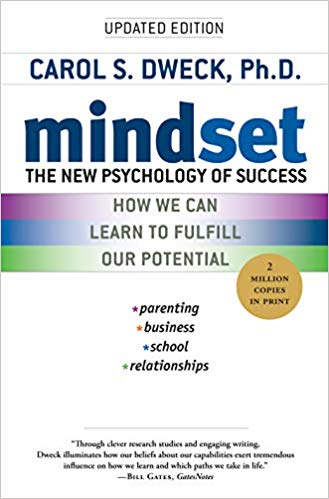

This article is an excerpt from the Shortform summary of "Mindset" by Carol Dweck. Shortform has the world's best summaries of books you should be reading.
Like this article? Sign up for a free trial here .
What is the champion mindset? How does it help you meet your athletic potential?
We’ll cover the elements of the champion mindset and how to adopt it to become the best athlete you can be.
Secrets of the Champion Mindset
In the book Moneyball, author Michael Lewis tells the story of baseball player Billy Beane, who had great natural talent but lacked the mindset necessary to become a champion. His fixed mindset, with its belief in natural talent, held him back. When things went wrong, he fell apart because he couldn’t tolerate failure. He couldn’t address his problems because he felt that expending effort shouldn’t be necessary and, in fact, would be an admission of weakness.
While watching a less talented player, Lenny Dykstra, who was undeterred by failure, Beane realized that a champion mindset was more important than natural ability. While he didn’t develop a growth mindset (champion mindset) as a player, Beane did apply that mindset to recruiting when he became a major-league executive. As general manager of the Oakland Athletics, he led the 2002 team to a near-record for consecutive wins with the second-lowest payroll in baseball. He focused on recruiting for mindset rather than talent.
Following is a look at how champions embody the growth mindset, or champion mindset, especially in the ways they view success and failure.
Success, Failure, and the Champion Mindset
Researchers studied student-athletes’ beliefs on athletic ability. Students’ with the champion mindset expressed views matching those of champion athletes. In other words they shared a champion’s mindset:
Champion Mindset Belief #1
They define success as learning, improving, and doing their best. This was the first key to a champion mindset. Jackie Joyner-Kersee said improvement was more important to her than winning. She wasn’t bothered by losing if she saw improvement and felt she’d done her best. She just went back to work. Tiger Woods and Mia Hamm loved to win, but the effort they’d made was more important to them. Basketball coach John Wooden said he enjoyed the games his team had prepared well for and played well as much as he enjoyed championship games. In contrast, athletes with a fixed mindset focused on winning to prove their superiority.
Champion Mindset Belief #2
When they experience failures or setbacks, it motivates them. This is the second key to the champion mindset. They learn from failures and treat them as a wake-up call. Michael Jordan wasn’t afraid of failures. He acknowledged them and practiced harder. In an advertisement, he noted that he’d missed over nine thousand shots, lost nearly three hundred games, and failed to make a game-winning shot 26 times. Conversely, athletes with fixed mindsets are humiliated by losses and setbacks.
Champion Mindset Belief #3
They learn to take control of and manage all aspects of the game or sport. This is the third key to a champion mindset. As Michael Jordan aged, he worked on conditioning and also worked to become a more well-rounded player, rather than relying on a few key shots. Tiger Woods worked on his swing at a young age, but he also learned about course strategy and keeping his mind focused and shutting out distractions. He managed his motivation by making practice fun. Athletes with a fixed mindset, like John McEnroe, don’t take control — they blame outside forces when they fail.
Teamwork Versus Stardom
While fixed-mindset athletes put individual performance ahead of teamwork, those with a champion mindset understand the importance of teamwork. Michael Jordan noted that stars can win games but it takes teamwork to win championships.
One fixed-minded player who didn’t get this was Keshawn Johnson, who played football for the Jets. He argued that he was a team player, but an individual first. He claimed he couldn’t help his team if he weren’t the number one player carrying the ball. The Jets soon traded him and his career didn’t last much longer.
In fact, every sport, including individual sports, is a team effort. Everyone requires coaches, trainers, caddies, and support staff. The long-distance swimmer Diana Nyad needed large teams to help her try for open water swimming records. Her team included guides, divers, watercraft operators, NASA nutrition experts, and trainers. She had a team of 51 people helping her when she set her record of 102.5 miles.
Grow Your Mindset: Tips
- Is there a sport that you showed talent for and liked until you had a setback? Adopt a champion mindset and try it again.
- Character stems from a growth mindset, and shows itself when the chips are down. How did you perform in a tough spot in a sport? How can you respond with a champion mindset next time?
- For athletes with a growth mindset or champion mindset, improving is as rewarding as winning. You’ll find sports rewarding when you adopt this belief.
Talent Versus Effort
In sports, many naturals don’t make it, while other athletes with deficiencies do. For instance, Pete Gray, with only one arm, made it to the major leagues; successful golfer Ben Hogan was an uncoordinated child; and the runner Glenn Cunningham’s legs were badly burned. The many obvious examples of failed naturals and successful, though flawed, athletes should have debunked the myth of talent, but it hasn’t.
5 Champion Mindset Examples
Here are more examples of the champion mindset trumping pure talent:
- Boxing experts took measurements to identify natural boxers. Muhammad Ali didn’t measure up — he had speed but wasn’t built like a typical fighter — while his opponent Sonny Liston was considered a natural. Ali’s advantage was his mind and mindset. He wasn’t cowed by Liston’s talent. He studied Liston to learn how he thought and acted. Then Ali played mental games with him, making Liston think of him as crazy and unpredictable. With the help of this distraction, Ali landed a punch no one thought was coming and won.
- Basketball great Michael Jordan wasn’t a natural, but he was extremely hardworking. He was cut from his high school team, which devastated him, but his mother told him to discipline himself and work harder and he did, getting up early each morning to practice before school. He wasn’t recruited by his preferred college and ended up at the University of North Carolina, where he continued his focus on practice, working constantly on his skills and weaknesses. Even at the height of his career, he worked doggedly on getting better.
- Legendary baseball player Babe Ruth wasn’t known for his athletic physique. He played inconsistently and drank and ate too much. When it looked like he was finally washed up in 1925, he mounted a comeback, based on practice and discipline. Today, the Yankees’ outfielder and hitter is regarded as the greatest baseball player of all time.
- Wilma Rudolph was christened the world’s fastest woman after winning three gold medals in 1960. But she was very ill as a child and suffered a paralyzed left leg due to polio. After years of physical therapy, she pursued basketball and track. She lost every race in her first track meet but she kept working to improve. Looking back on an amazing career, she said she just wanted to be remembered as hardworking.
- Jackie Joyner-Kersee, perhaps the greatest female athlete ever, competed in the heptathlon, which included running, hurdles, javelin, shot putt, and long jump. She set world records and won six Olympic medals in multiple sports. She had talent, but when she first started running, she didn’t win for a long time. She kept working and getting faster and when she started winning, she attributed it to her hard work. Seeing improvement motivated her to work even harder.
Character Counts
Naturals do exist in sports, but for some talented athletes with fixed mindsets, like Billy Beane and John McEnroe, talent can be a drawback. They become enamored with their superior ability and never stretch themselves or learn to work and handle failure. They don’t develop character, which is the ability to persevere despite challenges that grows from mindset. Character is an important element of the champion mindset.
An example is Pedro Martinez, a pitcher with the Boston Red Sox, who memorably demonstrated his lack of character by throwing a tantrum in game 3 of the American League playoffs against the New York Yankees in 2003. Martinez, who was the team’s hope, pitched well at first, then started falling behind and acting out because he couldn’t cope. He hit a batter with a ball, threatened the Yankees catcher, then knocked down the 72-year-old Yankees coach. The Yankees won the game and the playoff.
In contrast, here are two athletes who showed character and a champion mindset in overcoming setbacks:
- In 2000, tennis player Pete Sampras was playing at Wimbledon for his thirteenth Grand Slam, which would break the record for wins in top tournaments. He was losing and his hope of breaking the record seemed to be slipping away. During a break, he focused on changing his mindset by thinking about past matches where he’d been behind but had come back and won. As a result, he was able to rally and win.
- Jackie Joyner-Kersee found herself in trouble during her last world championship. In the last event of the heptathlon, the 800-meter race, she felt an asthma attack developing. She talked herself through it (“Keep going, you can make it”). She kept going and won, saying later that she considered it her greatest triumph because she persevered.
Some natural athletes — for instance, Mike Tyson, Darryl Strawberry, and Martina Hingis — make it to the top on talent, but they can’t stay there because while they have ability, they lack character, which stems from a champion mindset.
———End of Preview———

Like what you just read? Read the rest of the world's best summary of "Mindset" at Shortform . Learn the book's critical concepts in 20 minutes or less .
Here's what you'll find in our full Mindset summary :
- The difference between a growth and a fixed mindset
- How a fixed mindset keeps you back throughout your life: education, relationships, and career
- The 7 key ways to build a growth mindset for yourself






